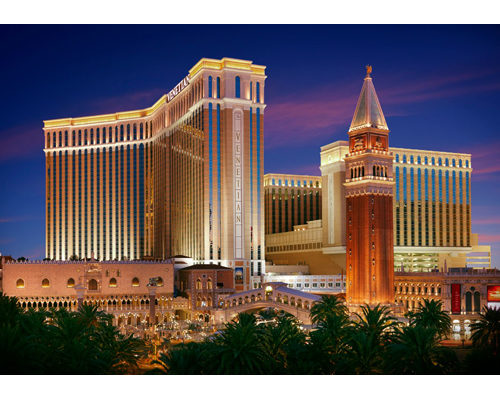The largest hotels are usually resorts that offer their guests a smorgasbord of shopping, dining and recreational choices. They often feature casinos and a full menu of live entertainment.
“Overall, the global hotel industry has recovered from the global recession of 2009. We are seeing healthy demand increases across the board [that] have led to increases in occupancy, which have given hoteliers a sense of pricing power,” says Jan Freitag, senior vice president at Smith Travel Research, a firm that tracks global supply-and-demand data for the hotel industry. “The increase in performance metrics, such as revenue per available room (a standard industry indicator), has attracted a lot of attention from developers. What we have observed across the board is renewed interest in the hotel space, and we expect new supply to be a mitigating factor to the prolonged growth rates of industry performance. Case in point is the luxury hotel industry in China, where demand growth has not kept track with the influx of new luxury rooms.”
Las Vegas has long been home to many large resorts and currently boasts six of the 10 largest hotel-resorts in the world, ranked according to most rooms. As a further sign of its pulling power as a travel destination, it is home to over 20 of the 40 largest hotels worldwide. Currently, Las Vegas has a total of 150,593 hotel rooms, according to the Las Vegas Convention and Visitors Authority.
Macau, a city on China’s south coast and the most lucrative gambling destination in the world, is currently undergoing a building boom, with a half-dozen resort-casinos costing over $1 billion each in various stages of development. "There are presently 23,423 hotel rooms in Macau, and, over the next three years, we anticipate there will be 5,800 additional rooms added," says Alyson Marks, media manager at the Macau Government Tourist Office.
SJM Holdings Ltd. broke ground in February 2014 on the Lisboa Palace on Macau's Cotai Strip. Inspired by the Palace of Versailles, it will feature an octagonal base with four towers and formal landscaping. Designed by WATG, its three luxury hotels will contain 2,000 rooms, and 290,000 sq ft will be devoted to gaming. The $3.9-billion complex is expected to open in 2017.
Sands China is building The Parisian Macau, another French-themed casino-resort. It will encompass 3,000 hotel rooms and suites, six luxury retail gallerias a la Paris and a half-size replica of the Eiffel Tower. Expected to cost $2.7 billion, it will open in phases beginning in 2015.
The largest resort-casino under construction in the Western Hemisphere is Baha Mar in the Bahamas. The $3.5-billion project broke ground in 2011 and is expected to be completed in December 2014. Designed by RMJM and Michael Hong Architects, it is being built by China Construction America Inc. on a 1,000-acre site. It will include 2,900 rooms, 284 private residences, a casino and a Jack Nicklaus-designed golf course.
While major hotel owners are interested in entering new markets, they face challenges. "Major hotel operators want to [ensure] that the quality of their brand standards can be achieved in emerging markets," says Michael Doring, regional director of operations for Asia at Turner International.
Doring oversaw two hotel projects in Vietnam that were completed late last year, one of which was the JW Marriott in Hanoi. The dramatic design of the eight-story, 800,000-sq-ft, horseshoe-shaped, cantilevered building is intended to evoke the form of a dragon. Designed by Carlos Zapata Studio, the building cost $170 million. The workforce peaked at 1,500.
The challenge for the contractor was sourcing the interior components while still meeting the client's standards, Doring noted. "The millwork is usually local. We try to localize the millwork and furniture as much as we possibly can, because the import taxes are incredibly high," he said.
















Post a comment to this article
Report Abusive Comment